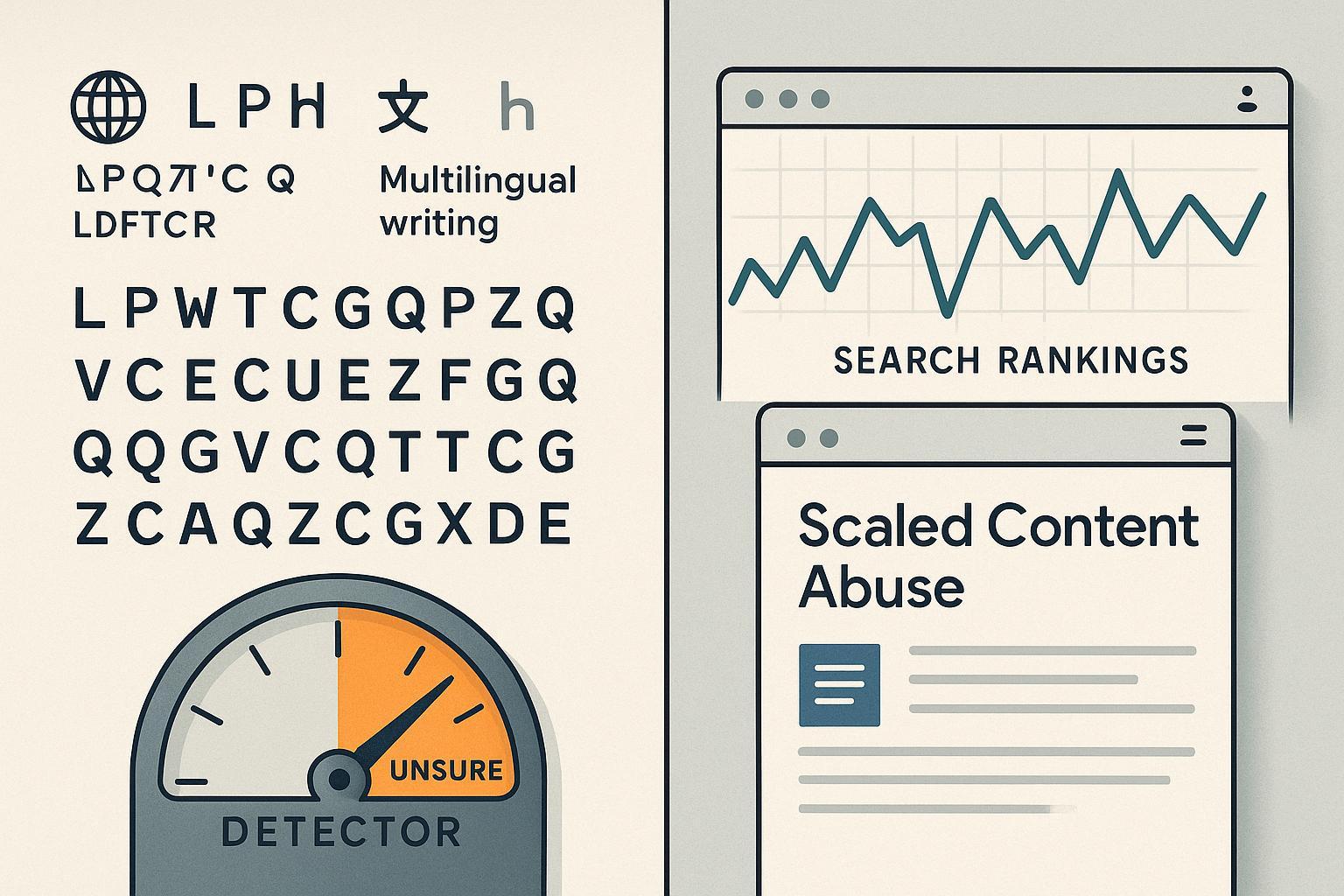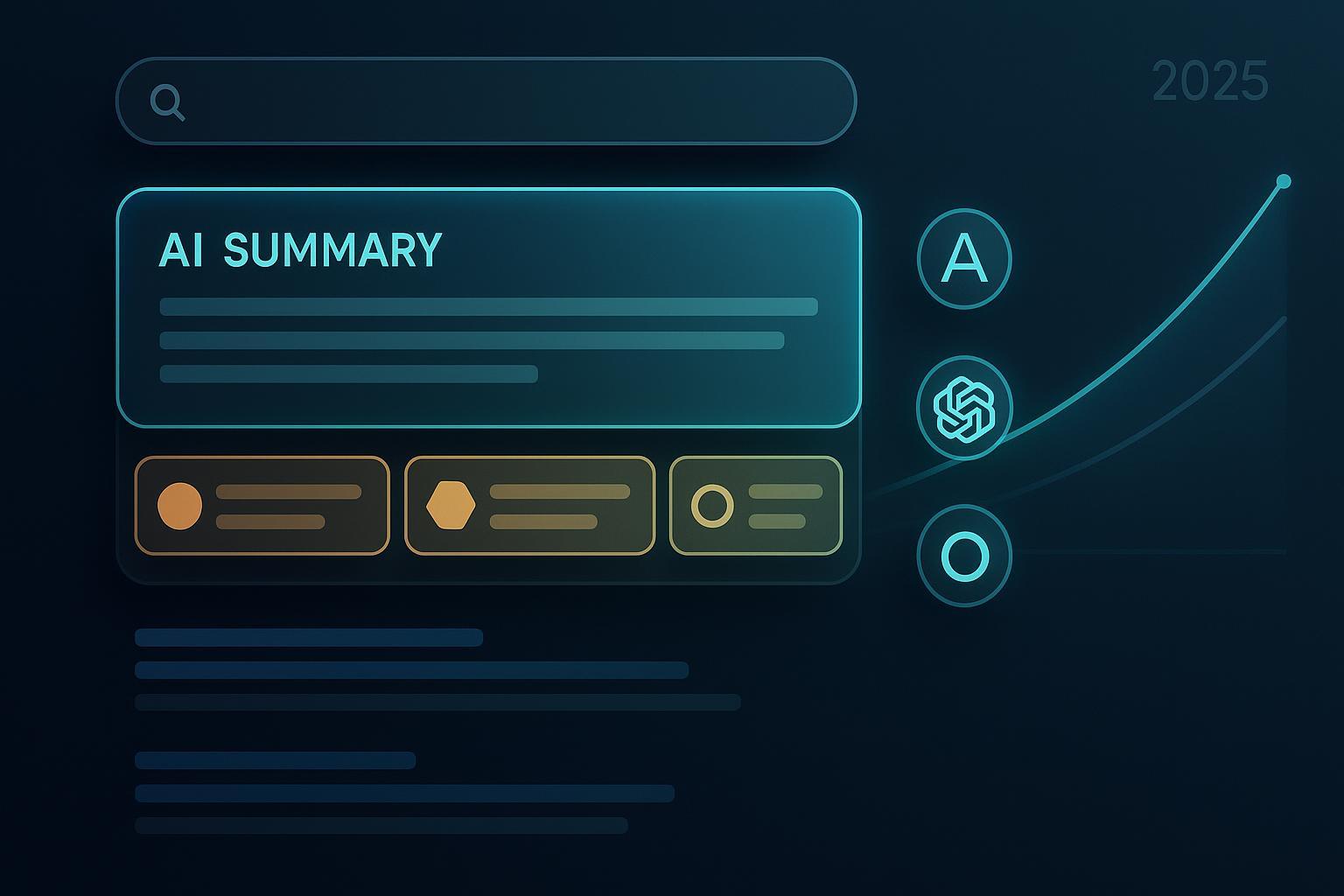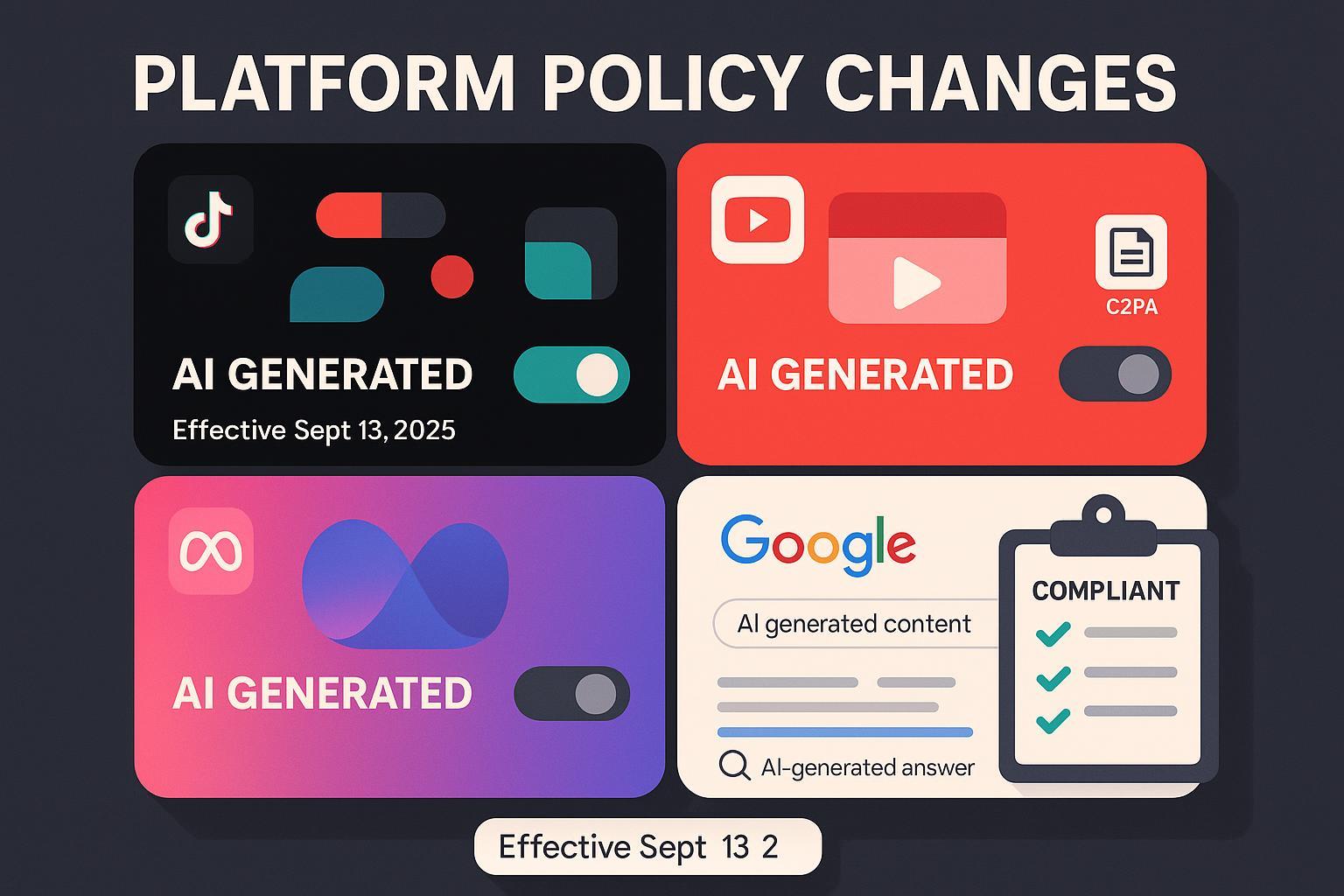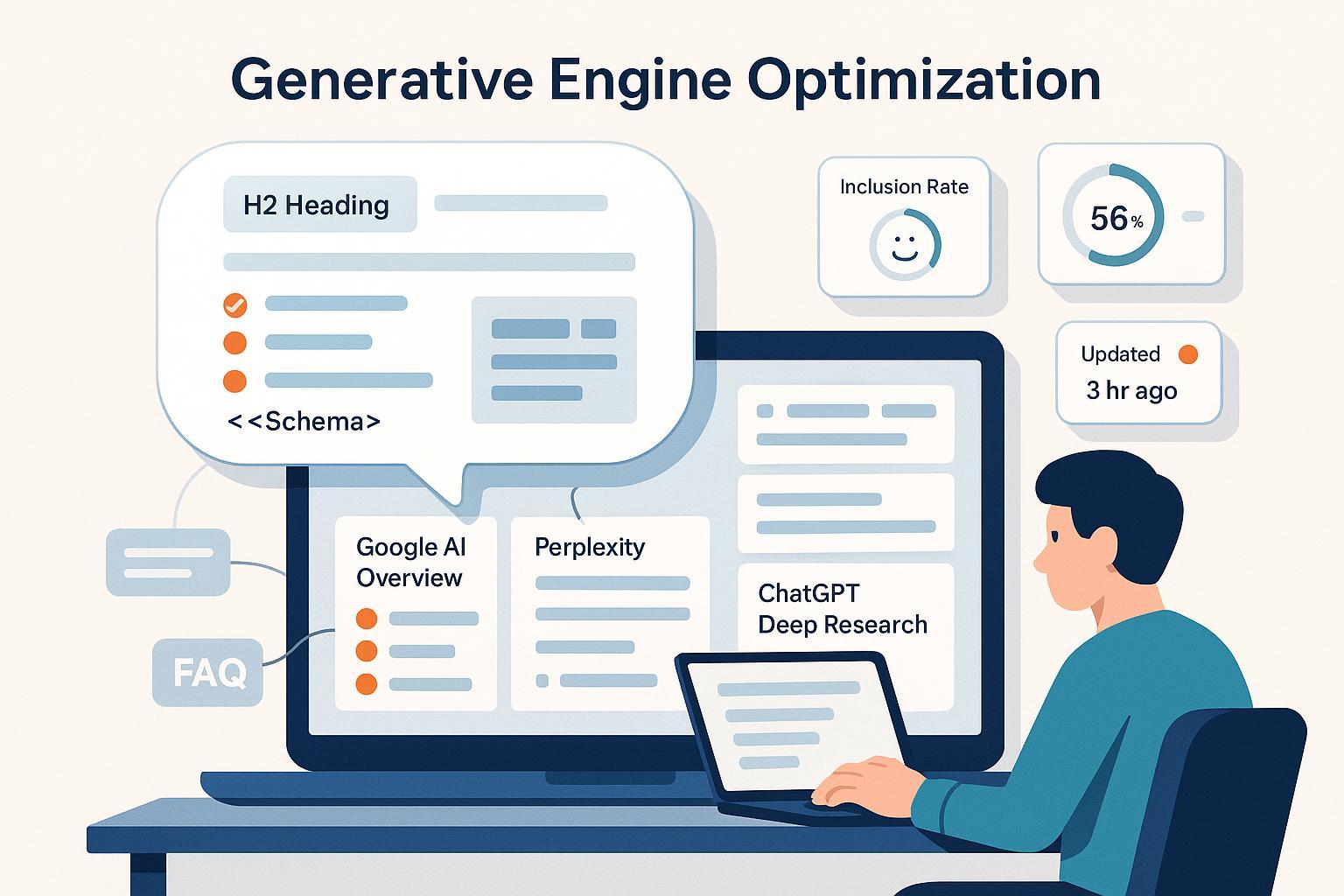Hybrid SEO and GEO Best Practices (2025) | Field-Tested Framework
Discover the 2025 field-tested hybrid strategy for SEO and GEO. Actionable best practices, measurement dashboards, and AI engine optimization for advanced digital marketers.
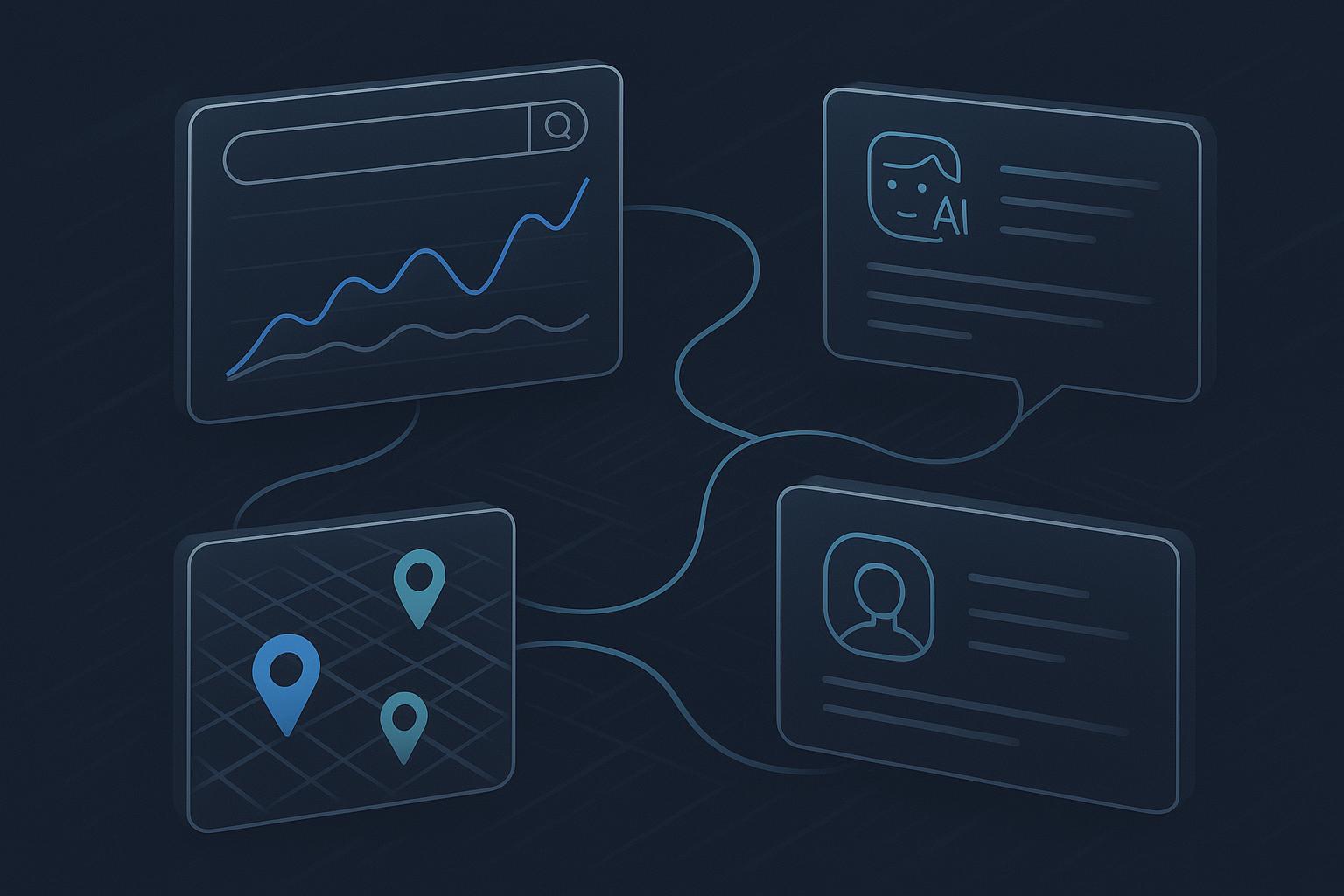
If you’re still running separate playbooks for SEO and geotargeting, you’re leaving compounding gains on the table. In 2025, visibility is decided across three surfaces at once: classic SERPs, local/Maps packs, and AI answers (Google AI Overviews, Perplexity, Copilot, ChatGPT Browse). What’s working in practice is a hybrid operating model that aligns entity clarity, local execution, and AI engine readiness—then measures everything in one pane of glass.
Below is the framework we use with multi-location and multi-region brands. It’s pragmatic, opinionated, and backed by primary documentation and recent case work.
1) Reality check and business case
Google’s 2025 guidance confirms there is no separate opt-out or opt-in for AI Overviews; standard Search controls apply, and AIO links to third-party sites when helpful. See Google’s own explanation in the 2025 page on AI features and your website and the May 2024 Generative AI in Search update.
The March 2024 core update reinforced “helpful, reliable, people-first content” and stronger spam policies, which still frame 2025 rankings. Reference the Google Search Central core update post (Mar 2024).
Local visibility continues to hinge on proximity, relevance, and prominence—unchanged principles, but the execution bar is higher. See BrightLocal’s overview of the Google local search algorithm pillars (2024–2025) and Aleyda Solis’s 2025 perspective on adapting SEO skills to AI search in her AI Search trends notes.
Implication: Control what you can (site architecture, GBP, structured data, crawler policies, localization). Influence what you can’t (AI inclusion) through entity clarity and consistent evidence across the web. Measure blended outcomes, not channel silos.
2) The hybrid operating model (5 layers)
Layer A — Entity-first architecture (brand + locations)
Goal: Make your brand and every location an unambiguous entity for both classic search and AI engines.
Implement Organization schema on your root entity page; include logo, sameAs links to authoritative profiles, and contact details. Use a unique, stable ID (e.g., #organization).
For each physical location, use a specific LocalBusiness subtype (e.g., AutomotiveBusiness, MedicalClinic). Follow Google’s current guidance for Local Business structured data (2025). Include name, PostalAddress, geo coordinates, telephone, openingHoursSpecification, URL, image, and sameAs.
Site IA: build topic hubs that connect brand services to geo-modified needs. Internally link from service hubs to location pages (and vice versa) with descriptive anchors—this supports relevance and discoverability for both SERPs and AI.
Media: ensure images are indexable and contextually relevant; avoid orphaned media and broken CDN rules. Google product/forum guidance has recurrent issues like priceValidUntil errors and non-indexable images—see community threads summarized under Product schema considerations and image indexing caveats.
Checklist
Brand entity page with Organization schema and consistent NAP
One location page per address, each with LocalBusiness schema
Topic hubs and internal links mapped to local intent
Image assets crawlable and labeled; alt text aligns with entity intent
Layer B — GEO execution (local and international)
Local (GBP and beyond)
Complete and maintain your Google Business Profile: accurate NAP, precise primary category, relevant secondary categories, products/services, attributes, and seasonal hours. BrightLocal and Sterling Sky repeatedly show these correlate with engagement; review the 2025 Local marketing predictions and Sterling Sky’s hours guidance.
Visual cadence: post high-quality photos/videos regularly. In a 2024 multi-location test, Sterling Sky saw ranking uplift tied to targeted, frequent visuals; see the Search Engine Land recap of the geotagged photos test.
Reviews: solicit detailed, service-specific reviews; respond thoughtfully; monitor Q&A. Prominence is reputation in practice.
Tracking: add UTM parameters to GBP website links and Posts, then read GBP Performance metrics alongside analytics. Use Google’s GBP Performance API for daily timeseries and Post insights via the RPC methods.
International (hreflang and structure)
Choose URL structure by scale and resources. Subdirectories are usually the best balance for global brands; ccTLDs send the strongest geo signal but fragment authority; subdomains are flexible but more separate. Align with Google’s localized versions guidance.
Implement reciprocal hreflang (including x-default) in HTML, headers, or sitemaps; validate for crawlability and avoid IP-based auto-redirects, which Google discourages. See also Google’s sitemaps and hreflang examples.
Layer C — AI engine readiness (AIO, Perplexity, ChatGPT, Copilot)
Use standard robots controls to decide your policy on AI crawlers. You can block or allow via user-agents like Google-Extended, GPTBot, PerplexityBot, and ClaudeBot. Reference OpenAI’s GPTBot page and Google’s crawler overview and robots basics.
Don’t rely on llms.txt/ai.txt for discovery. As of 2025, there’s no recognized standard; industry reporting emphasizes its unofficial status—see Search Engine Land’s coverage: llms.txt proposed standard and analysis on why it’s not a replacement for robots.txt.
Expect no dedicated GSC reporting for AI Overviews. Google’s 2025 doc clarifies AI features use standard controls and are included within overall Search; there is no separate traffic report. See AI features and your website.
If relevant, evaluate Perplexity’s publishing pathway; answers include citations and there’s a publisher program (2024). See Perplexity Publishers Program and getting started notes.
Baseline policy example
Treat high-E-E-A-T content hubs and location pages as “allow” for AI crawlers that respect robots; block low-quality or sensitive paths while you harden content.
Maintain a changelog for robots policy updates; test with server logs.
Layer D — Content and media that map to hybrid intent
Location page template: H1 with service + city, unique intro paragraph, embedded map (non-blocking), NAP, openingHoursSpecification surfaced, service list with internal links, FAQs based on real queries, and LocalBusiness schema. Add fresh photos and short videos; ensure images are indexable.
Service hubs: cover problems, comparisons, pricing ranges, and “near me” variants where natural. Consider FAQ/HowTo schema where it adds user value and complies with Google’s structured data policies.
GBP content: weekly Posts tied to promotions or seasonal updates; use UTMs. Coordinate review prompts after key service moments.
“Open now” leverage: keep hours precise (including holidays). Sterling Sky notes hours changes can impact visibility; see their GBP hours explainer.
Layer E — Measurement and governance
Merge four data sources into one dashboard: GBP Performance API (impressions, calls, direction requests), Google Search Console (queries, pages), analytics (conversions), and local rank grids (geo granularity). BrightLocal documents practical reporting setups in their local SEO reporting guides.
Track AI engine referrals and citations: monitor referral traffic from Perplexity/Copilot/ChatGPT Browse where available and maintain a manual log of AI citations for priority queries.
Use a metric hierarchy: leading indicators (crawl/index status, schema validation, GBP completeness, review velocity, photo cadence) → mid-funnel (Local Pack coverage by grid cell, AI citation count, branded + geo query impressions) → outcomes (calls, directions, bookings, revenue attribution).
Compliance guardrails: treat precise location as sensitive data under U.S. state laws and GDPR. Obtain explicit consent, minimize collection, avoid sensitive inferences, and document DPIAs where applicable; see IAPP on 2025 privacy focus areas and geolocation enforcement in their privacy program priorities and enforcement trend overview.
3) Step-by-step playbooks
Playbook 1 — Multi-location local uplift (6 weeks)
Audit GBP for each location: categories, attributes, NAP, hours, products/services, photos. Fix gaps; add UTMs.
Create/update location page templates; implement LocalBusiness schema per location.
Launch a review surge campaign with specific prompts tied to services rendered.
Start a visual cadence: at least 2–3 fresh photos per location weekly; ensure subject relevance (validate with a vision API if needed).
Measure weekly: GBP calls/website clicks, direction requests, Local Pack coverage via grid, and GSC geo-modified queries.
Playbook 2 — Internationalization (8–12 weeks)
Decide on subdirectory vs ccTLD vs subdomain; provision hreflang plan with x-default.
Localize content (not just translate); adapt services, pricing formats, units, and legal notices.
Implement reciprocal hreflang in HTML or sitemaps; QA for crawlability.
Build country/region-specific backlinks and citations; align local social profiles (sameAs).
Monitor: country-segmented GSC, conversions by market, and local SERP features.
Playbook 3 — AI engine readiness and governance (ongoing)
Draft and approve robots policy for AI crawlers (Google-Extended, GPTBot, PerplexityBot, ClaudeBot). Roll out, log, and test.
Harden entity hubs and location pages for inclusion: clear summaries, authoritative sources, and unique media.
Monitor AI answers weekly for top 50 hybrid-intent queries; capture citations/screens.
Evaluate Perplexity Publisher onboarding if your audience overlaps significantly.
Review policy quarterly as models evolve; update content and structured data accordingly.
4) Evidence and mini case notes
A1 Garage Door Service (Sterling Sky, 2024): Full GBP + on-site local schema + review strategy drove +117% YoY calls and +119% website clicks, improving Local Pack coverage. See the documented A1 Garage Door case study.
GBP photo geotag test (2024): Posting targeted, frequent visuals correlated with ranking improvements in Local Pack across 27 locations; details in the Search Engine Land recap.
AI Overviews measurement reality (2025): Google confirms there’s no separate AIO traffic report; treat AIO as part of overall Search and monitor via blended analytics as explained in AI features and your website. Practitioners continue to debate traffic magnitude, but policy and measurement constraints are clear.
5) Tooling and automation blueprint (2025)
Rank and geo coverage: BrightLocal Local Search Grid or equivalents for per-cell visibility.
Reporting: Pipe GBP Performance API + GSC + analytics into a BI tool (Looker Studio, Power BI). Create a source-of-truth dashboard with weekly cohort views.
Schema and QA: Use Google’s Rich Results Test plus linters; schedule crawls; alert on schema or indexation regressions.
Visual QA: Use a computer vision API to score photo relevance to your entity/services (optional but helpful at scale).
Governance: Maintain a robots policy repo and change log; log AI citations with evidence links and screenshots for leadership reviews.
6) Trade-offs, pitfalls, and how to avoid them
Chasing AI Overviews without foundations: If crawlability, schema, and GBP hygiene lag, AI inclusion efforts won’t stick. Start with Layers A and B.
Over-reliance on llms.txt: It’s not a standard in 2025. Use robots.txt for enforceable controls.
IP-based redirects for international: Hurt crawlability and user experience; rely on hreflang + user choice prompts.
Thin, duplicate location pages: They fail both users and AI engines. Invest in unique content and media per location.
Privacy blind spots: Precise geo without consent invites regulatory risk. Map data flows and secure CMP alignment.
7) 90-day execution roadmap and KPI ladder
Days 0–30: Entity audit, GBP fixes, robots policy draft, location template rollout in one pilot region. KPIs: schema validation 100%, GBP completeness >95%, crawl stats stabilized.
Days 31–60: Visual cadence live, review surge, service hub refresh, hreflang implementation for one priority market. KPIs: +20–30% Local Pack coverage in pilot grid, +10% branded + geo query impressions.
Days 61–90: Expand to all regions, dashboard live, AI citation monitoring, Perplexity evaluation. KPIs: +15% calls/directions in pilot, first AI citations logged for top queries, conversion lift tied to geo pages.
What I’d do differently next time
Start AI crawler policy earlier; content teams need lead time to adjust tone and sourcing for E-E-A-T.
Over-invest in photo/video operations; it’s the most under-resourced lever with outsized local impact.
Treat international hreflang QA as an ongoing process, not a one-off. Automate checks weekly.
References and further reading
Google 2025 guidance on AI features and your website
Google Search Central on the March 2024 core update and spam policies
BrightLocal’s pillars of local search algorithm: proximity, relevance, prominence
Sterling Sky’s A1 Garage Door Service case
Search Engine Land’s summary of the GBP geotag photo test
OpenAI’s GPTBot documentation and Google’s crawler/robots overview
Google guidance on Local Business structured data and structured data policies
Google international SEO docs on localized versions and hreflang
IAPP’s 2025 focus on privacy programs and geolocation enforcement
If you implement this hybrid model with discipline, you’ll see compounding gains across SERPs, Maps, and AI answers. The key is sequencing: entity clarity first, geo execution second, AI readiness third—and measurement throughout.

